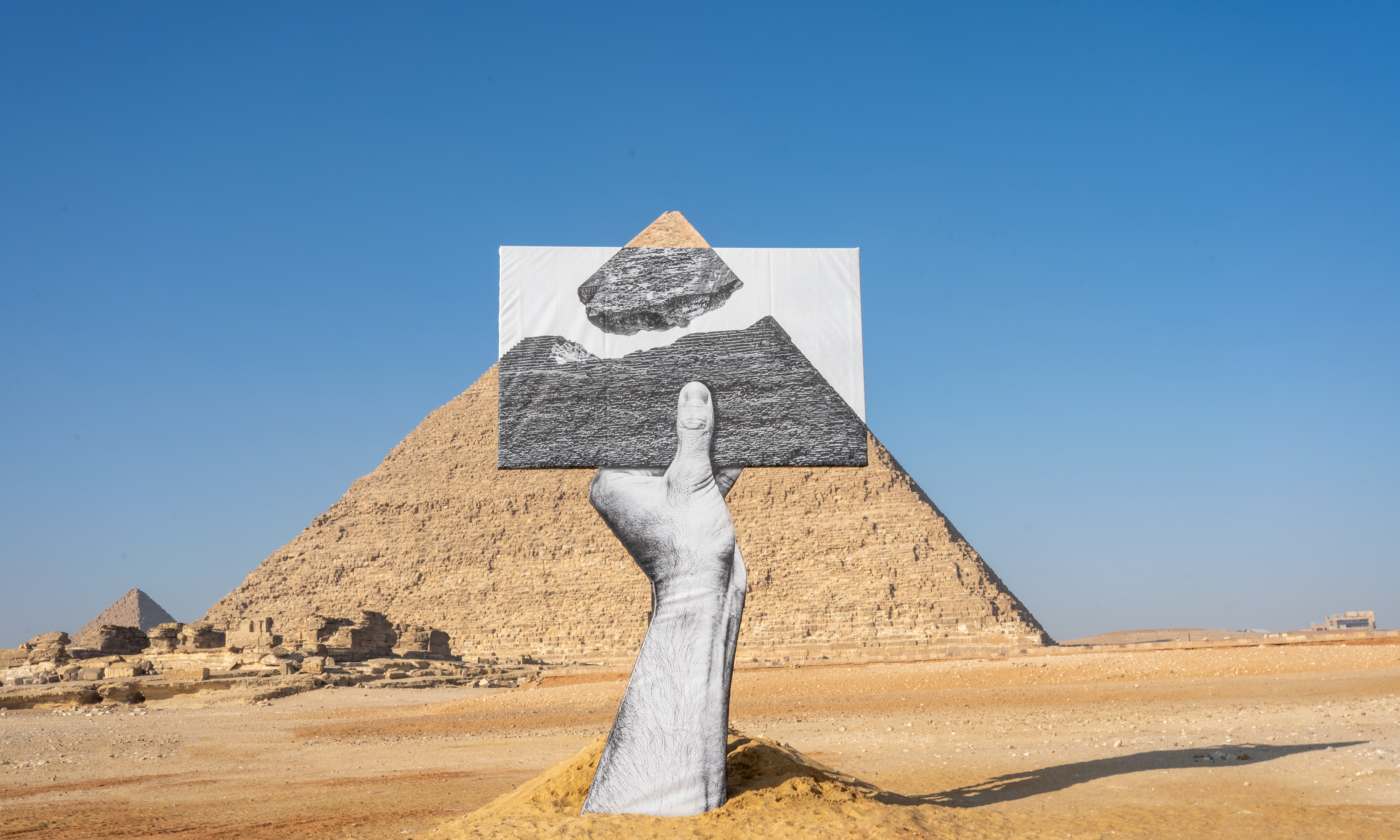This year's programme includes 12 international artists from Europe, Asia, Africa, the Middle East and North America
Greetings from Giza, Hesham El Sayfi, as seen in last year's edition of the show. Courtesy of Art D'Egypte
In its fourth iteration, the Forever is Now exhibition at the pyramids of Giza continues its tradition of installing contemporary works next to ancient sites. With the iconic backdrop of the pyramids an inherent part of the installations, the sculptures invoke a surreal mise en scène, often suggesting sci-fi cinematic epics.
Opening on 24 October, this year’s programme is curated by Nadine Abdel Ghaffar and her company Culturvator by Art D’Egypte, and includes 12 international artists from Europe, Asia, Africa, the Middle East and North America.
Art D’Egypte proposes that this year’s curatorial theme “positions both artists and visitors as modern-day archaeologists, using creativity as their tools to uncover the hidden layers of meaning embedded in the ordinary”.
Ghaffar says: “This year’s exhibition is particularly special as it marks the first time we are featuring artists from Asia, opening up new dialogues and connections across borders. Our concept delves into the rich narratives of our past while exploring the transformative power of contemporary art.”
Korean artist Ik Joong Kang, who visited Egypt in 2023 to conduct workshops with local schools, will present a work called Four Temples.
In an artist’s statement he writes: “The arrangement of four structures, reminiscent of Egyptian temples, symbolizes the belief that, despite the divisions and conflicts on Earth, harmony and peace can be achieved through communication and exchange. The sixteen walls that comprise this work are not meant to divide space; rather, they connect the past, present, and future, linking our divided world together.”
He promises that the exterior will feature the Korean folk song Arirang—sung by both South and North Koreans—written in Hangeul, English, Arabic, and Hieroglyphs.
In a similar sentiment, but vastly different form, work by Vancouver based Lebanese/Egyptian artist Marie Khouri will reprise an installation whose first iteration graces the interior of the Vancouver Art Gallery. I Love—an installation that is part of her Arabic alphabet series—also bears a message of peace and unity.
Each of Khouri’s pieces is formed through an extensive hands-on process that begins with moulded clay that is scaled up and remade with expanded polystyrene. The enlarged works then undergo vigorous carving and sanding by the artist until they form stylised Arabic calligraphy— reminiscent of curvilinear Zaha Hadid architecture—spelling I Love.
Khouri told The Art Newspaper: “The work is to be part of the Vancouver Art Gallery permanent collection when it comes back in 2028 for the new building. The sculpture will tour European and Middle Eastern museums until then.”
This year’s programme coincides with exhibitions at three historic spaces in downtown Cairo, as well as the Tale of Two Cities exhibition that explores cultural and historical connections between Alexandria and Athens.

